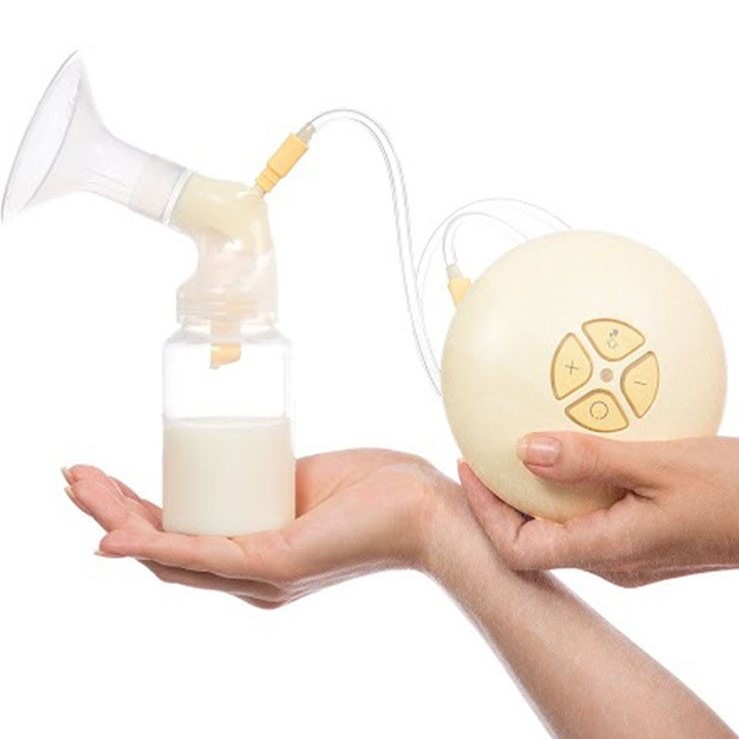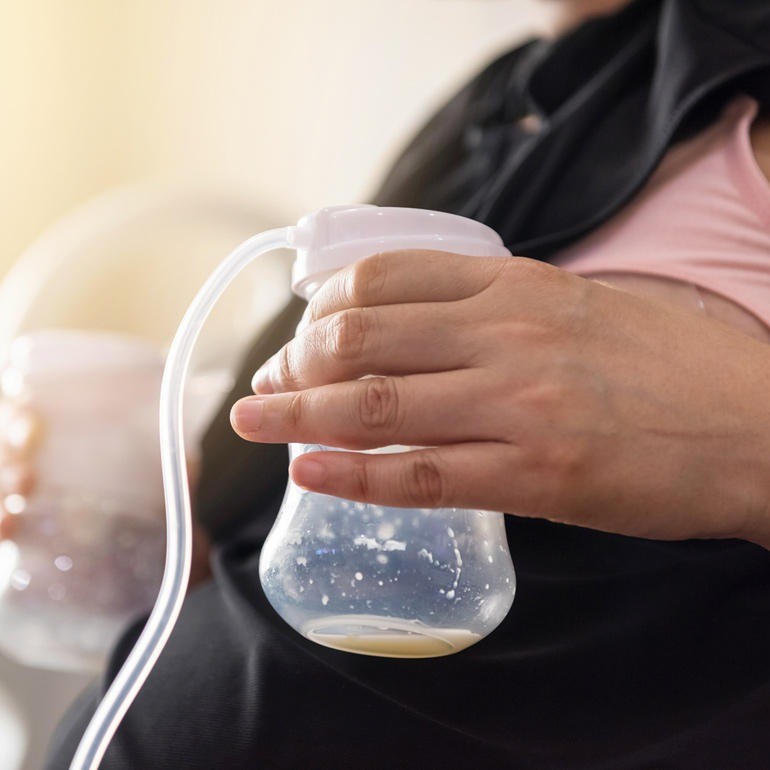Understanding Breast Milk Production
Understanding how your body creates breast milk can help when you need to stop. Hormones control milk production in your body. After childbirth, these hormone levels change, leading to milk supply. Reducing or stopping breast stimulation signals your body to produce less milk. If you avoid pumping or breastfeeding, milk production decreases over time. Avoiding milk removal is key in the drying-up process. Keep breasts from getting too full to prevent discomfort. Gradual reduction is important for your comfort and health. This comprehensive guide provides a thorough understanding and actionable steps on how to dry up breast milk safely and comfortably, ensuring you have the information needed for a smooth transition.
Phases of Lactation and Breast Milk Ejection
Understanding the phases of lactation is essential for managing your breast milk supply. Initially, hormone changes after childbirth trigger colostrum production. This early milk is rich in nutrients and antibodies. After a few days, your milk supply increases as ‘mature milk’ replaces colostrum.
The milk ejection reflex, also known as ‘let-down’, is a key part of lactation. It occurs when the baby suckles or when you pump. This reflex causes your milk to flow from the breasts. With time and less stimulation, this reflex subsides, aiding in drying up breast milk.
If you need to stop lactation, it’s crucial to understand and respect these phases. Gradually reducing feeding or pumping sessions is important. This helps minimize discomfort and prevents excessive milk ejection signals to your body. By following these steps, the process of drying up breast milk can be managed effectively and safely.
Methods to Gradually Reduce Milk Supply

To gradually reduce breast milk supply, several methods can be effective.
Wear a Supportive Bra
Wear a firm, supportive bra day and night. This can help prevent additional stimulation of the breasts, which signals the body to produce more milk.
Express Milk for Comfort Only
If you are engorged, express just enough milk to ease discomfort. Overexpressing can prolong milk production.
Adjust Feeding Frequency
Begin to skip or shorten breastfeeding sessions. This tells your body to slow down milk production.
Avoid Stimulating Nipples
Keep from stimulating the nipples during weaning to reduce milk ejection signals to your body.
Use Cold Packs
Apply cold packs to breasts to relieve swelling and discomfort. Avoid heat as it can increase circulation and milk production.
Gradual Weaning
Reducing breastfeeding sessions slowly over time can help minimize discomfort and decrease milk supply naturally.
Stay Hydrated
While reducing milk supply, drink water to stay hydrated but avoid overconsumption as it can signal your body to produce more milk.
Follow these steps deliberately and patiently to manage and reduce breast milk supply effectively. If unsure, consult a healthcare provider or lactation expert for guidance.
Non-Pharmacological Ways to Manage Engorgement
To manage breast engorgement without medicine, try these safe and natural methods.
Use Cold Compresses
Apply cold packs or ice wrapped in a cloth to your breasts. This eases pain and reduces swelling.
Cabbage Leaf Compresses
Chill cabbage leaves and place over your breasts. Cabbage may relieve engorgement pain when used as compresses.
Adjust Your Bra
Wear a supportive bra that fits well. Avoid tight bras that can increase discomfort.
Gentle Breast Massage
Massage breasts gently. This can relieve pressure. Avoid over-stimulation which might increase milk production.
Warm Showers With Caution
Take warm, not hot, showers. Let water flow gently over your shoulders instead of directly on your breasts.
Express Milk Sparingly
Only express small amounts of milk to relieve discomfort. Do not empty the breasts completely.
Sage and Peppermint Tea
Drink sage or peppermint tea. These herbs may aid in reducing breast milk supply.
Frequent Comfort Measures
Perform comfort measures regularly. Consistency can help manage symptoms and avoid complications like mastitis.
These non-pharmacological methods can provide relief from engorgement as you work on drying up your breast milk. However, if the discomfort is severe or persists, consult a healthcare professional.
Safe Medications and Herbs for Drying Up Milk
When you’re ready to stop lactation, some safe herbs can help. Here’s how to use them.
Sage Tea for Milk Suppression
Drink sage tea a few times each day. Sage can help reduce milk production.
Peppermint Tea as a Mild Remedy
Peppermint tea can also help. Drink it daily to aid in drying up milk.
Parsley as a Dietary Addition
Add parsley to your meals. It may help to lower milk supply.
Over-the-Counter Medications With Caution
Some decongestants may aid in decreasing milk. Always consult your doctor first.
Remember, these are suggestions. Each body reacts differently. If you’re unsure or if you have other health concerns, talk to a healthcare provider before trying these. They can give you the best advice for your situation.
Comfort Measures During The Drying-Up Process

When drying up breast milk, comfort is key. Here are tips to ease the process.
Wear A Comfortable Bra
Choose bras that support without squeezing. Tight bras can worsen engorgement.
Apply Cold Compresses
Use cold packs or bags of frozen peas. Wrap in a cloth to avoid skin damage.
Cabbage Leaves
Chill cabbage leaves and wear them inside your bra. They may soothe and decrease swelling.
Express Milk Sparingly
Only express milk to relieve pressure. Do not pump; this signals more milk.
Take Pain Relievers As Needed
Over-the-counter pain medications like ibuprofen can reduce discomfort. Check with your doctor first.
Engage In Distraction Activities
Focus on activities that relax you. This can distract from discomfort.
Remember to take these steps gradually, and listen to your body.
Potential Challenges and How to Overcome Them
Addressing potential problems early on can make the process of drying up breast milk smoother.
Engorgement and Discomfort
Engorgement may occur as milk production ceases. To reduce discomfort, apply cold compresses, gently express milk, and wear a supportive bra. Avoid binding or tight clothing to prevent complications.
Emotional Adjustments
Weaning can be an emotional time for both mother and child. Seek support from loved ones, connect with other mothers, and allow yourself time to adjust. It’s okay to feel a mix of emotions during this period.
Inconsistent Milk Supply Decrease
Milk supply might not decrease at the same rate in both breasts or as quickly as desired. Continue with the recommended methods, and consult a healthcare professional if needed for personalized advice.
Risk of Mastitis
Watch for signs of mastitis, like redness or fever. If symptoms appear, seek prompt medical attention. Prevent mastitis by avoiding breast emptying and overstimulation.
Leaking Milk
Milk may leak unexpectedly. Use breast pads to absorb leaks and wear an absorbent bra.
Facing these challenges head-on and with proper strategies can lead to a more comfortable and controlled cessation of breast milk production.
Seeking Professional Support and When to Contact a Healthcare Provider

During the process of drying up breast milk, professional support can be invaluable. Contact a lactation consultant or healthcare provider if you’re struggling with the process, for personalized advice or if you are experiencing any complications, such as mastitis.
Situations Requiring Professional Support
Seek the help of a healthcare professional in the following situations:
- If you are in intense pain.
- If engorgement leads to symptoms of mastitis like fever and red streaks.
- When milk supply does not decrease despite following the recommended methods.
- If you’re dealing with emotional distress during weaning.
Recognizing Mastitis Symptoms
Mastitis is a potential risk when drying up milk. Look out for symptoms such as:
- A high fever or flu-like symptoms.
- Warm, red, and tender areas on the breasts.
- A hardened lump or wedge-shaped area on the breast.
Immediately consult a healthcare provider if you notice these symptoms, as mastitis requires prompt treatment to prevent complications.
Emotional Support
Don’t hesitate to reach out for emotional support. This can include:
- Talking with a friend or family member.
- Joining a support group for breastfeeding mothers.
- Scheduling a consultation with a mental health professional if you’re experiencing depression or anxiety.
Always remember, your well-being is as important as managing your milk supply, and professional and emotional support can guide you through the drying up process with comfort and ease.